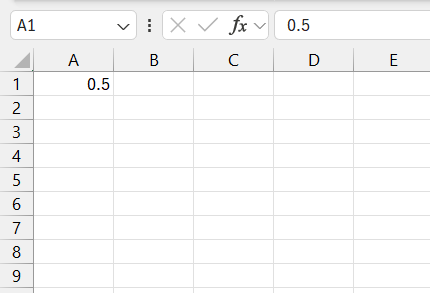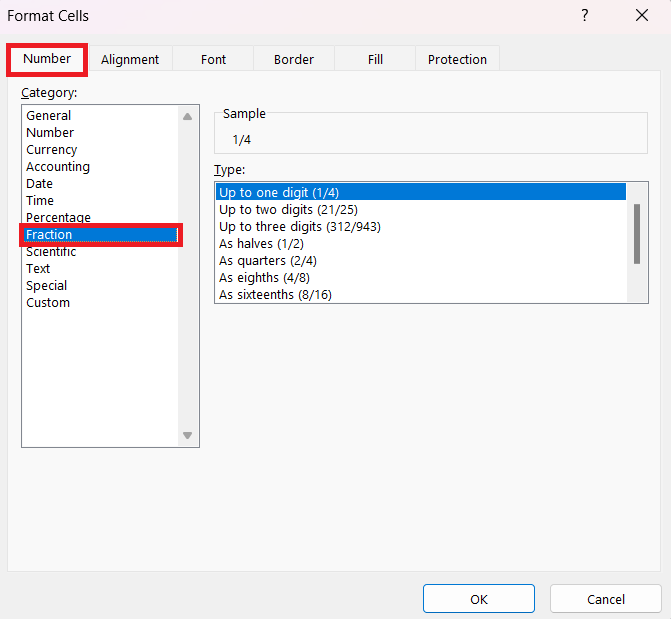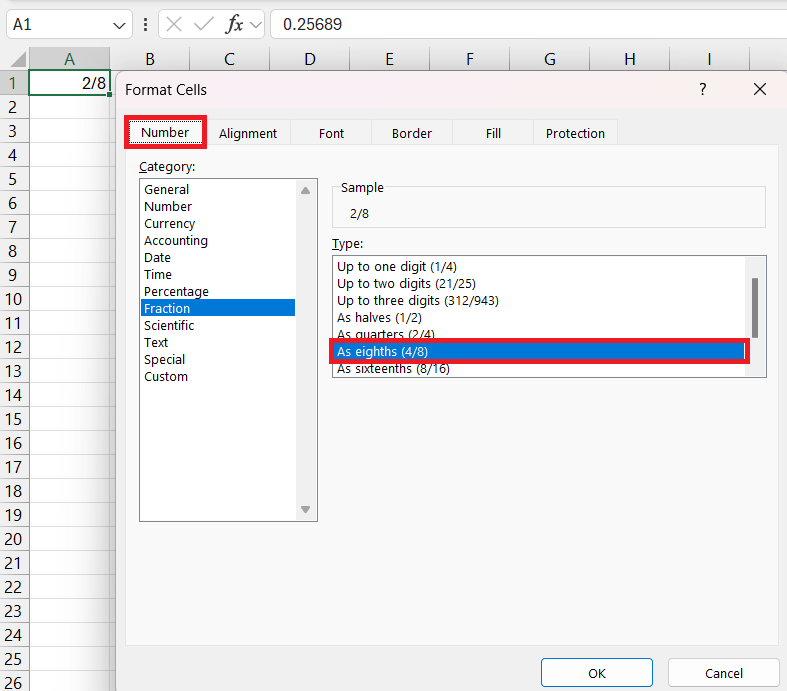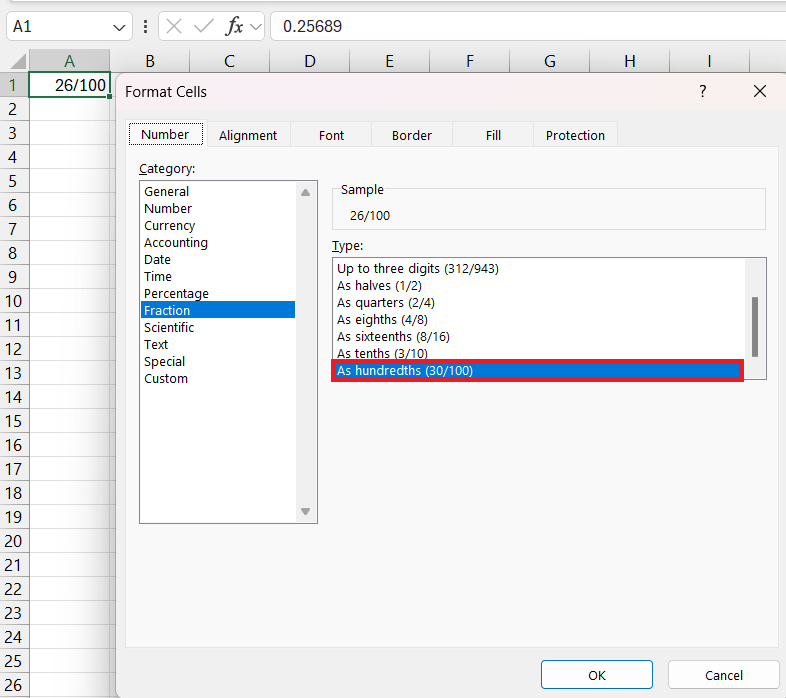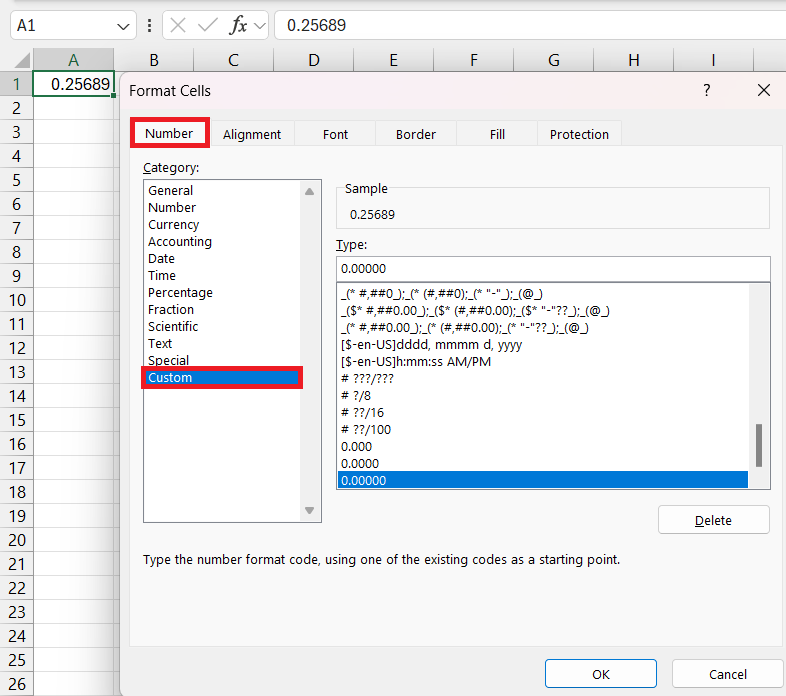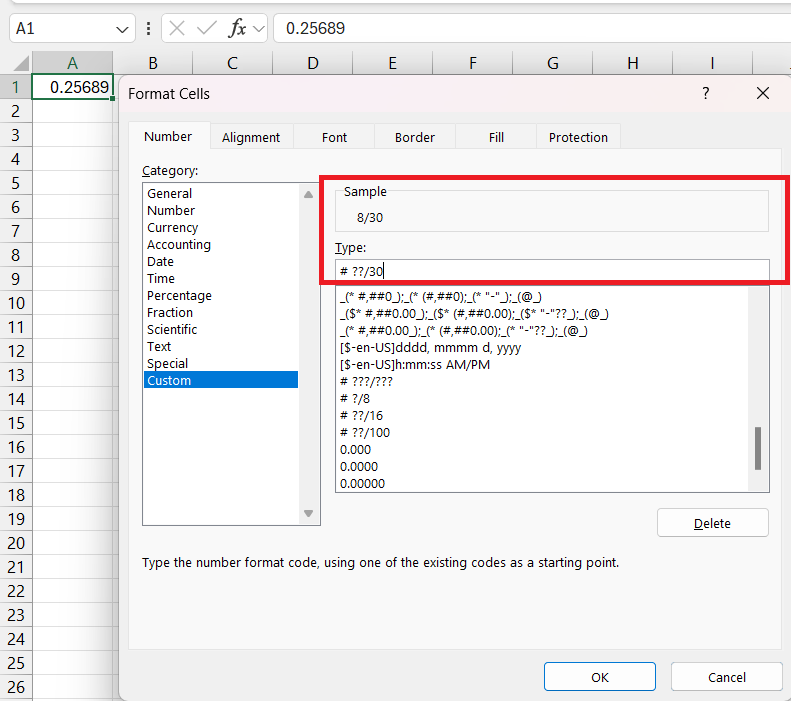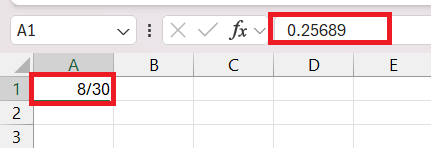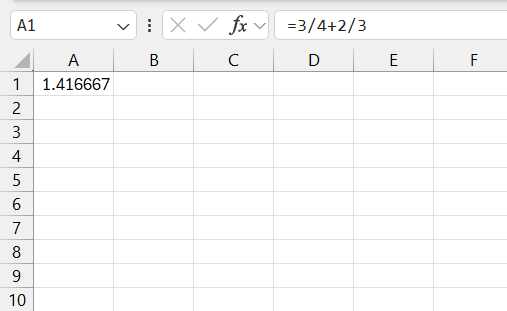Unlock the power of fractions in Microsoft Excel with our comprehensive guide. Learn how to seamlessly display decimals as fractions, providing clarity and precision to your data presentations.
Key Takeaways:
- Excel’s Fraction Display: Excel lets you effortlessly showcase fractions, enhancing comprehension and precision in various fields.
- Benefits of Fraction Display: Fractions offer intuitive insights, simplify comparisons, and align with standard measurements in industries like cooking, construction, and finance.
- Transforming Decimals to Fractions: With a few clicks, Excel transforms decimals into fractions, ensuring accuracy and consistency in your data representation.
- Custom Fraction Formatting: Tailor fraction formats to your specific needs, whether it’s standard presets or unique denominators, Excel provides flexibility.
- Advanced Techniques: Explore advanced techniques like using the TEXT function for precision control and seamlessly integrating fractions into formulas and text strings, enhancing your Excel proficiency.
Table of Contents
Mastering Fractions in Excel: A Guide to Number Formatting
Understanding How Excel Handles Fractional Numbers
With Microsoft Excel, you’re not limited to decimal numbers—you can also work with fractions. It’s crucial to understand that while Excel naturally computes in decimals, the way a number is displayed can be altered to show fractions instead.
Remember, Excel isn’t shifting the value; just its presentation. When you need to manage fractional numbers effectively, Excel has got you covered by letting you decide precisely how those numbers appear in your spreadsheets.
The Benefits of Displaying Decimals as Fractions
Displaying decimals as fractions can offer a more intuitive understanding of the value, particularly in contexts where precise quantities matter, like in cooking or construction. Fractions can also simplify comparison because they make it easier for you to compare part-to-whole relationships at a glance.
Plus, in certain industries, standard measurements are often in fractions, so displaying decimals in this form means less conversion and clearer communication within that field.
For visual learners, fractions can make data more digestible, as they can see parts of a whole, rather than an abstract decimal. And when it comes to presenting your data, fractions can also seem less daunting than decimals, which could contain several decimal places and appear more complex.
Transforming Decimals to Fractions Step-by-Step
Entering the Decimal 0.5 into Your Spreadsheet
Entering a decimal like 0.5 into your Excel spreadsheet is as straightforward as clicking on a cell and typing in the number. However, Excel will naturally show it as a decimal. To see it as a fraction, you’ll initially see your 0.5 as you’ve entered it.
But don’t worry, Excel is designed to switch number formats easily, giving you the ability to display this value in the fractional format of your choice with a few additional steps, which we’ll explore in the following sections.
Choosing the Right Fraction Format for Your Needs
Selecting the right fraction format is essential and luckily, Excel offers multiple pre-set options to suit your data. Let’s explore the steps:
STEP 1: Start by highlighting the cell or range with your decimal numbers.
STEP 2: Navigate to the ‘Home’ tab, find the ‘Number’ group, and click the dialog box launcher to access the ‘Format Cells’ dialog.
STEP 3: From there, you’ll click on the ‘Fraction’ category where you have the luxury of choosing formats ranging from single-digit denominators like 1/4, up to three digits (312/943), as well as special formats for halves, quarters, tenths, and so on.
STEP 4: Select the one that aligns best with your data or the convention in your field. For example, if you’re working within a construction context, you might opt for eighths or sixteenths, given the standard unit measurements in inches.
If you’re involved in financial reporting, where currency is concerned, the hundredths format might be more suitable as it coincides with the monetary system.
Custom Fraction Formatting Tricks
Creating Your Own Unique Fraction Format
When existing formats don’t quite meet your needs, Excel allows you to create a unique fraction format. This could be vital when you require a specific denominator that isn’t available in the standard options. Here’s what to do:
STEP 1: First, select all the cells where you want the custom fraction format to apply.
STEP 2: Then, click on the ‘Home’ tab, and under the ‘Number’ group, click the small arrow to open the ‘Format Cells’ dialog. Within the ‘Number’ tab, click on the ‘Custom’ category.
STEP 3: In the ‘Type’ input box, enter your desired fraction format—let’s say, ‘# ??/30’ if you want every fraction to have a denominator of 30.
STEP 4: Hit ‘OK’ and check the result.
This will convert all selected decimal numbers to the fraction format with a denominator of 30. It’s a powerful way to standardize data display according to your specific needs or to make the data resonate more with your audience.
Overcoming Common Fraction Formatting Challenges
Dealing with Non-Integer Fractions Swiftly
Handling non-integer fractions in Excel can seem tricky, but the application is fully equipped to manage them. You may encounter a situation where your fractions don’t have a whole number, or you need to represent fractions smaller than one. In these instances, you’ll again make use of the ‘Format Cells’ dialogue box.
For non-integer fractions, ensure you’ve typed your decimal or fraction into the cell, highlight it, and then apply your desired fraction format as detailed previously. Excel will swiftly display the fraction correctly, even if it’s a repeating or complex fraction. This way, you can avoid manual conversion or the risk of rounding errors that could affect the integrity of your data.
Keep in mind that when your fractions are particularly unique and are not covered by the standard formats, venturing into custom formatting will give you the control you need to display your data accurately.
Ensuring Accuracy when Rounding Numbers to Fractions
Ensuring accuracy in rounding numbers to fractions in Excel is a priority, as even a small rounding error can lead to significant discrepancies, particularly in fields like accounting or engineering. Excel does most of its rounding automatically when you apply a fraction format, but it’s important to note that all numbers are rounded to the nearest single-digit fraction.
When applying a fraction format, select one that provides the precise level of detail required. If your data needs to be accurate to the nearest one-eighth, choose the appropriate fraction format to reflect that. To get even more granularity, consider using the ‘Increase Decimal’ or ‘Decrease Decimal’ options, or delve into custom formats for more control.
Always double-check your results, especially after formatting. If necessary, you can use formulas to round your numbers to the desired fraction manually. Functions like MROUND, ROUNDUP, and ROUNDDOWN can be set to round to the nearest multiple of the fraction you’re working with.
Advanced Techniques for Fraction Formatting
Utilizing TEXT Function for Precision Control
The TEXT function in Excel is your go-to feature for precision control when displaying numbers as text, including fractions. This function lets you take a numeric value and format it as text in any way you specify, including as a fraction. Here’s an insightful fact: when you apply the TEXT function, it’s not merely changing how the value looks; it actually converts the number to a text string, which won’t be computed in numerical calculations.
For instance, if you want to show 0.5 as a fraction in your spreadsheet, simply use the formula =TEXT(0.5, "# ?/?") and voila, it shows up as ‘1/2’. This is particularly useful if you need specific text outputs for reports or presentations where the calculations have already been done.
Do keep in mind, though, that since the result is no longer a number but a text string, it won’t be usable in further calculations unless converted back to a number.
Entering Fractions Directly in Formulas and Text Strings
Do you need to mix words with numbers in Excel and still make sense of it all? You can seamlessly include fractions directly in formulas and even in your text strings. When writing a formula, you can enter fractions in their raw form—simply type something like =3/4+2/3 and Excel will acknowledge this as a mathematical operation, calculating the result.
When you want to integrate fractions within a text string, concatenate the numeric fraction with text using the & operator or use the TEXT function for greater control over number formatting. For example, ="The ratio of X to Y is "&TEXT(3/4,"# ?/?")&"." will output as a readable text string, ‘The ratio of X to Y is 3/4.’, with the fraction retaining its form.
It’s a nifty way to inject numerical data into descriptive sentences without losing clarity or accuracy.
Frequently Asked Questions
How do you write half as a fraction in Excel?
To write half as a fraction in Excel, simply enter 1/2 directly into a cell or use =1/2 as a formula. Then, apply a fraction format by right-clicking on the cell, selecting ‘Format Cells’, choosing ‘Fraction’, and picking the format you need. Excel will display half as 1/2 in your cell.
Can I Automatically Convert All Decimals to Fractions in Excel?
Yes, you can automatically convert all decimals to fractions in Excel by selecting the cells you want to format, and then using the ‘Format Cells’ dialog box. Choose ‘Fraction’ under the ‘Number’ tab and select the type of fraction you want. Excel will then convert and display all decimals in the selected cells as fractions.
How Do I Prevent Excel from Changing My Fractions to Dates?
To prevent Excel from interpreting fractions as dates, you can start by formatting the cells as text before entering your fractions. Alternatively, precede your fraction with a zero and a space (0 1/10) or an apostrophe ('1/10). This tells Excel to treat the entry as text or a literal fraction, not a date.
Can Excel convert a decimal to a fraction?
Absolutely, Excel can convert a decimal to a fraction. Simply select the cell containing the decimal and change its format to ‘Fraction’ through the ‘Format Cells‘ dialogue box under the ‘Number’ tab, which can be accessed from the ‘Home’ tab. Excel will display the decimal as the nearest fraction based on the chosen format.
What is the shortcut for fractions in Excel?
There isn’t a dedicated shortcut key for formatting fractions in Excel. However, you can quickly apply a fraction format by right-clicking a cell, selecting ‘Format Cells’, clicking on the ‘Number’ tab, choosing ‘Fraction’, and then your preferred fraction type. Save time by using the Ctrl + 1 keyboard shortcut to quickly open the ‘Format Cells’ dialog.
John Michaloudis is a former accountant and finance analyst at General Electric, a Microsoft MVP since 2020, an Amazon #1 bestselling author of 4 Microsoft Excel books and teacher of Microsoft Excel & Office over at his flagship MyExcelOnline Academy Online Course.

